Takamagahara in Nara: Sightseeing and Hiking
2022/04/11
Gose City of Nara Prefecture is located at the southwestern end of the Nara Basin and is an area that is home to a variety of important historical locations, including the scenic Kongo Mountain Range which separates the Nara area from Osaka and is home to the ancient religious tradition of Katsuragi Shugendo mountain asceticism.
Just to the south of Mt. Katsuragi is Mt. Kongo, on the cove of which is the Takamihiko Shrine and Takamidera Hashimoto Temple, respectively. This little interesting corner of Nara may often get overlooked for sightseeing, so lets take a quick look at what it has to offer visitors.
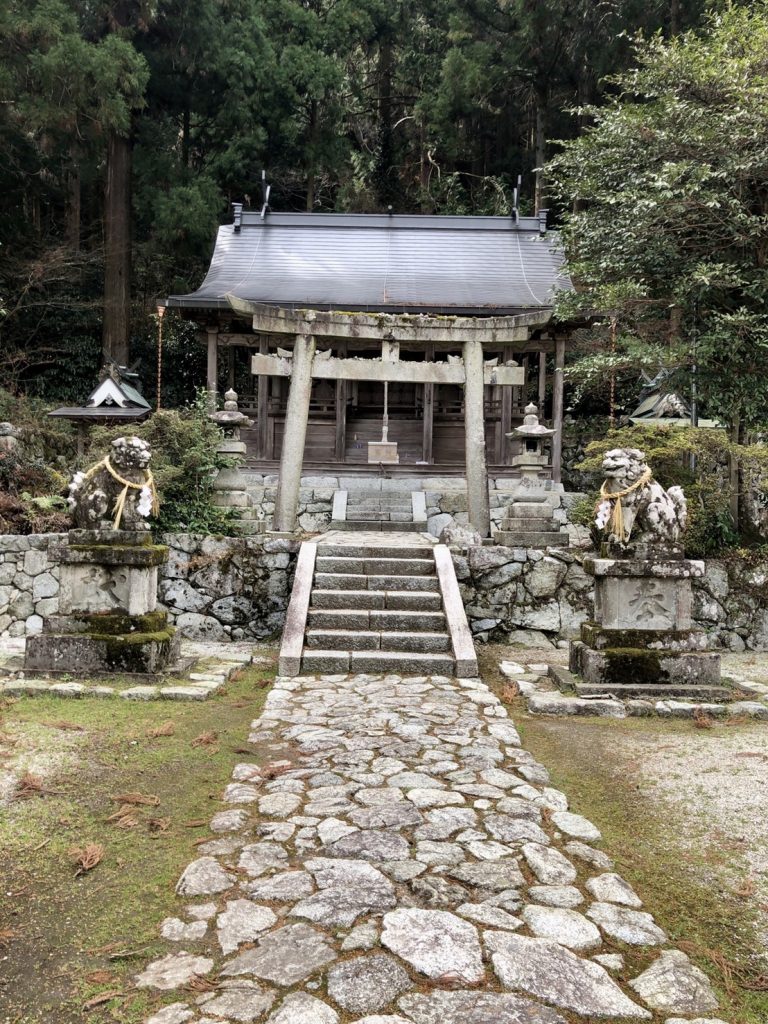
The Takamihiko Shrine (高天彦神社)
The Takamihiko Shrine
To give a bit of background info, Mt. Kongo was in ancient times known as Mt. Takamagahara, which is actually a place name in Shinto belief that refers to sacred plain or land of the heavenly gods. Various ideas exist around where exactly Takamagahara is supposed to be located, but one theory is that it is around Mt. Kongo, hence the name. The Takamihiko Shrine is located right at the base of the mountain and enshrines a kami (deity) by the name Takamimusubi-no-kami, who was the 2nd Shinto kami to appear in Takamagahara and the god of agriculture. The shrine itself is not very large, but has surreal atmosphere and the path leading up to it is an impressive branch-roofed hallway of old giant cedar trees.
There is no main building which houses the kami at the back of the Takamihiko Shrine because the hill behind it (named Mt. Shirakumo) is believed to be the kami itself, a concept known as “shintai,” or “god body.” The worship of a mountain shintai instead of having a building housing a kami indicates that the shrine is especially old. The famous Omiwa Shrine in Nara’s Sakurai City, which claims to be the oldest Shinto shrine in the country, also has a mountain shintai as it’s main object of worship. Furthermore, the Takamihiko Shrine is also referenced in writings that date back to the Heian Period (794 – 1185 CE).
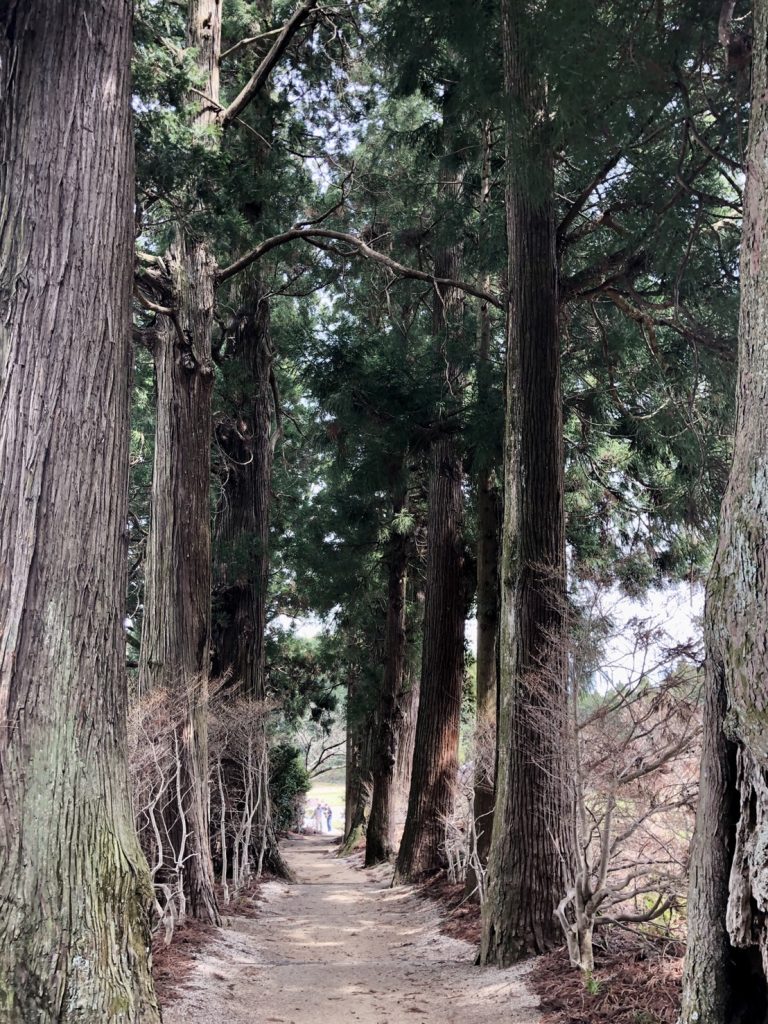
Cedar trees in front of the shrine.
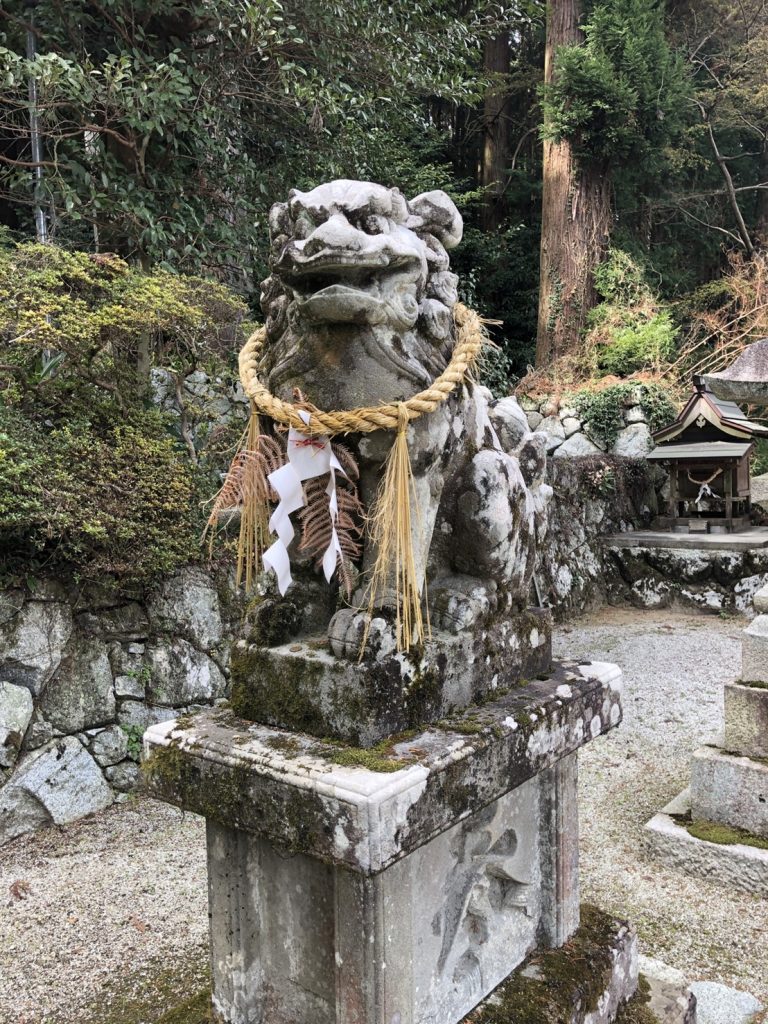
Komainu statue in front of the shrine.
Located next to the shrine is a curious waterwheel that was donated to the shrine by local people. The waterwheel is thought to be lucky due to the number of its rotations in a day (approximately 12,342.857 times, or one rotation every 7 seconds), containing no number 0, 6, or 9. 6 and 9 are thought to be unlucky in Japanese culture due their pronunciations sounding like other negative words; 6 as “mu” meaning “nothing” or “lack of,” and 9 as “ku” meaning “pain” or “hardship.”
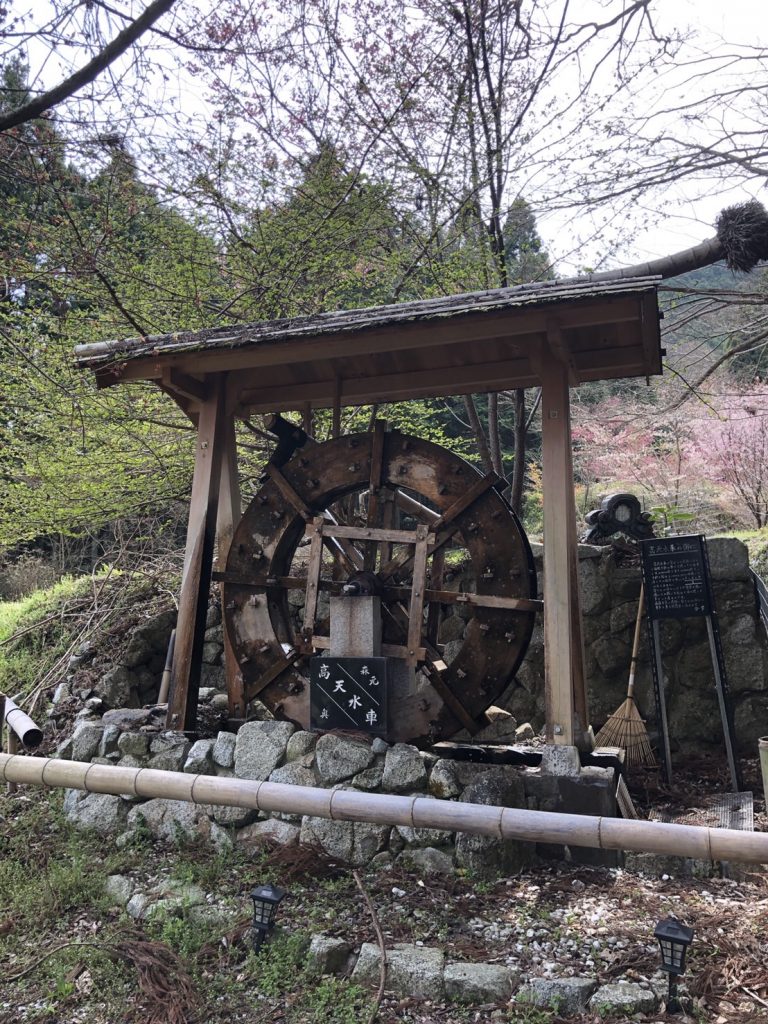
Besides the waterwheel, the area around the shrine continues to be maintained and beautified by local people in various ways, including the addition of cherry blossom tree groves and other types of flowers that make it a pleasant spot to visit throughout the different seasons of the year.
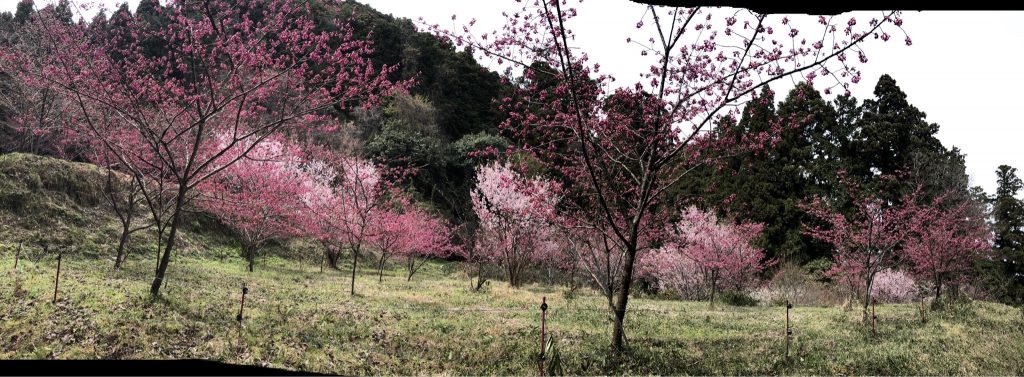
The hiking course up Mt. Kongo is found to the southwest of the Shrine through the forest, but can be a bit tricky to locate as you have to cross a small creek to get there. The hike is definitely worth the effort though as the views from the trail are quite stunning and at the top there are interesting sacred sites related to Shugendo mountain asceticism, as well as great views overlooking Osaka and beyond.
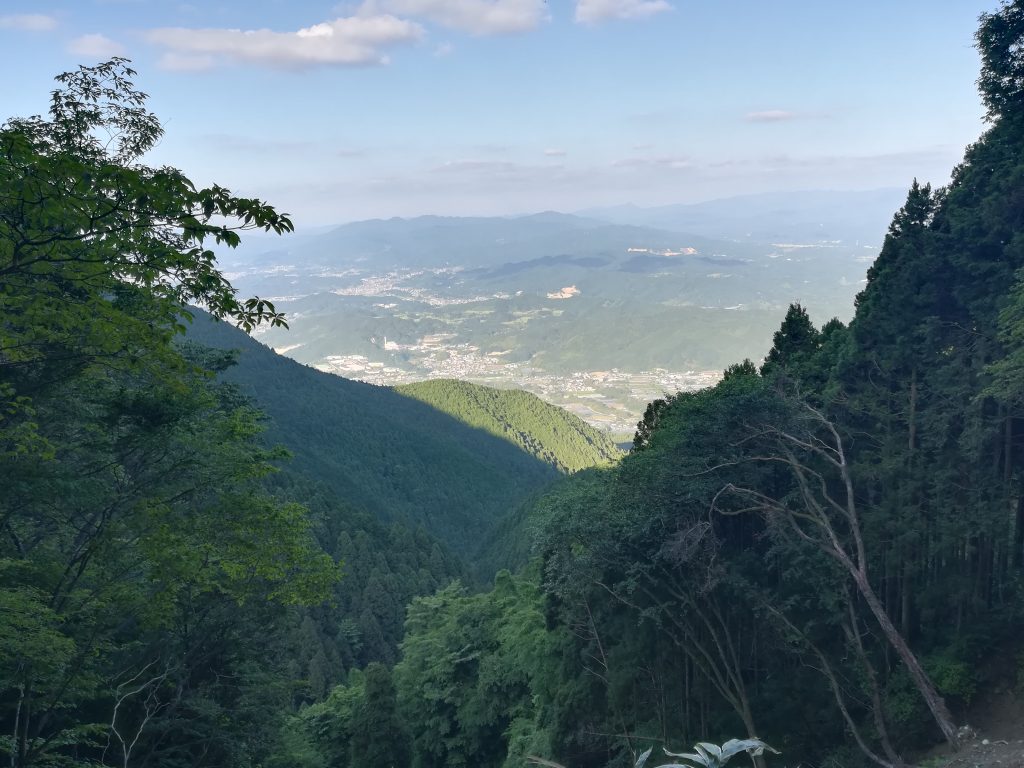
View from Mt. Kongo looking down over Gose City.
Takamidera Hashimoto Temple
This small, unassuming location, not far from the Tamihiko Shrine, actually has an ancient past and is connected to the famous Buddhist priest and father of Japanese cartography, Gyoki (668-749 CE). According to official history, upon visiting the area to worship in the Takamagahara area, Gyoki felt the sacred atmosphere of the place and resolved to construct a temple. He was also recorded to have been encouraged in this undertaking through witnessing a vision of an eleven-faced figure of Kannon Bosatsu, a Buddhist bodhisattva also known as the Goddess of Mercy.
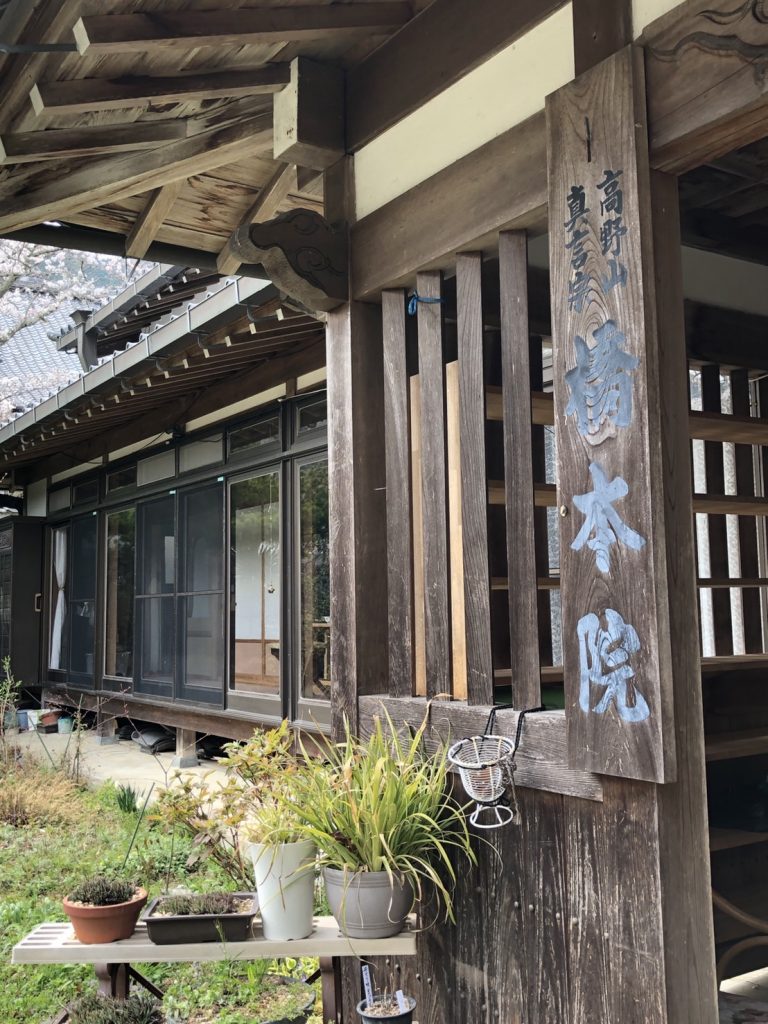
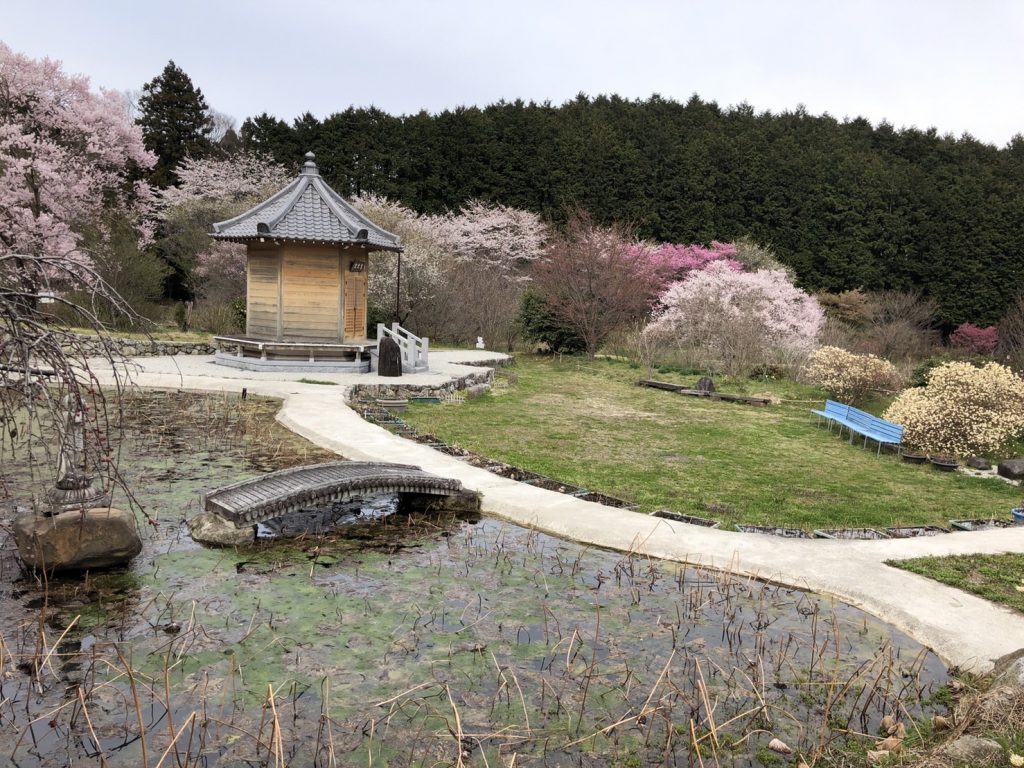
Grounds Takamidera Hashimoto-in Temple.
The temple’s construction was completed under the sponsorship of Empress Gensho (715-724) and it remained as an influential temple for some time. The founder of the previously mentioned Shugendo faith, an ascetic by the name of En no Gyoja, is also said to have visited for religious training.
The temple was destroyed in a fire during the Nanboku-cho Period (1336-1392), but was rebuilt later on.

Nowadays the temple is famous for its beautiful natural scenery including flowers of various types and sizes, from nanoha to sakura. It is usually has a serene atmosphere that allows for quiet contemplation of the deep history while walking through the grounds. This of course makes it an excellent place to visit if you are looking to get away from crowded streets of many of Japan’s dense cities.
Access
Accessing the 2 above sites is much easier if you have access to a vehicle or at least a nice road bicycle as there are no nearby train stations. The hike alone up to the peak Mt. Kongo is worth the trip, but the added presence of both the Takamihiko Shrine and Takamidera Hashimoto Temple make this place a must-visit spot for those wishing to get off the beaten path in Gose City, Nara Prefecture.

01
FIND YOUR FAVORITE
TRIP ON OUR WEBSITE.
SEND US AN INQUIRY.

02
PERSONALIZE THE TRIP
TO YOUR INTERESTS
WITH OUR CONSULTANT.

03
20% DEPOSIT TO CONFIRM.
BALANCE PRIOR TO ARRIVAL.
PAYMENT BY CC OR TT.

04
WE WILL
MEET YOU
AT THE AIRPORT.

05
DISCOVER THE
TREASURES!